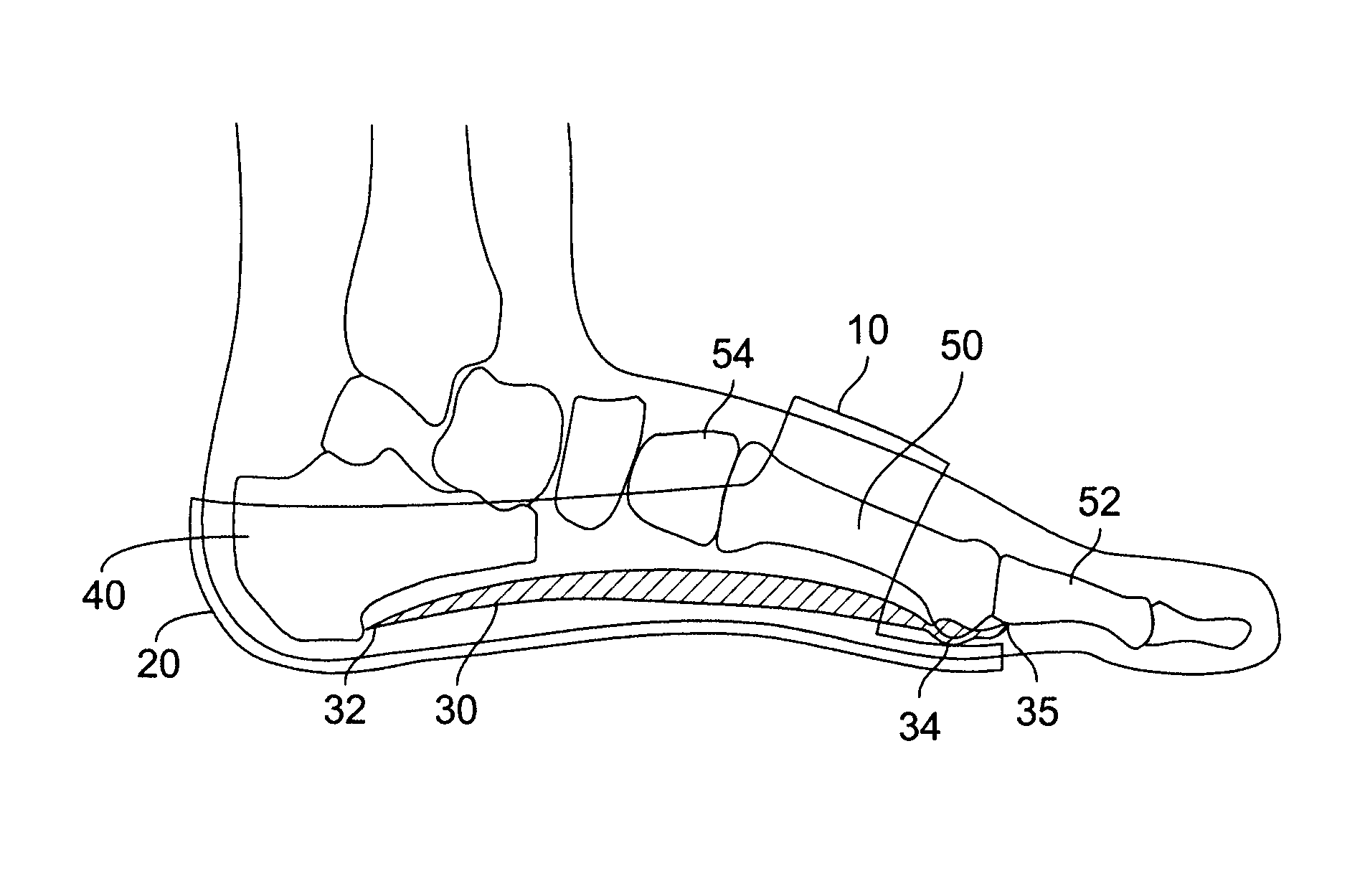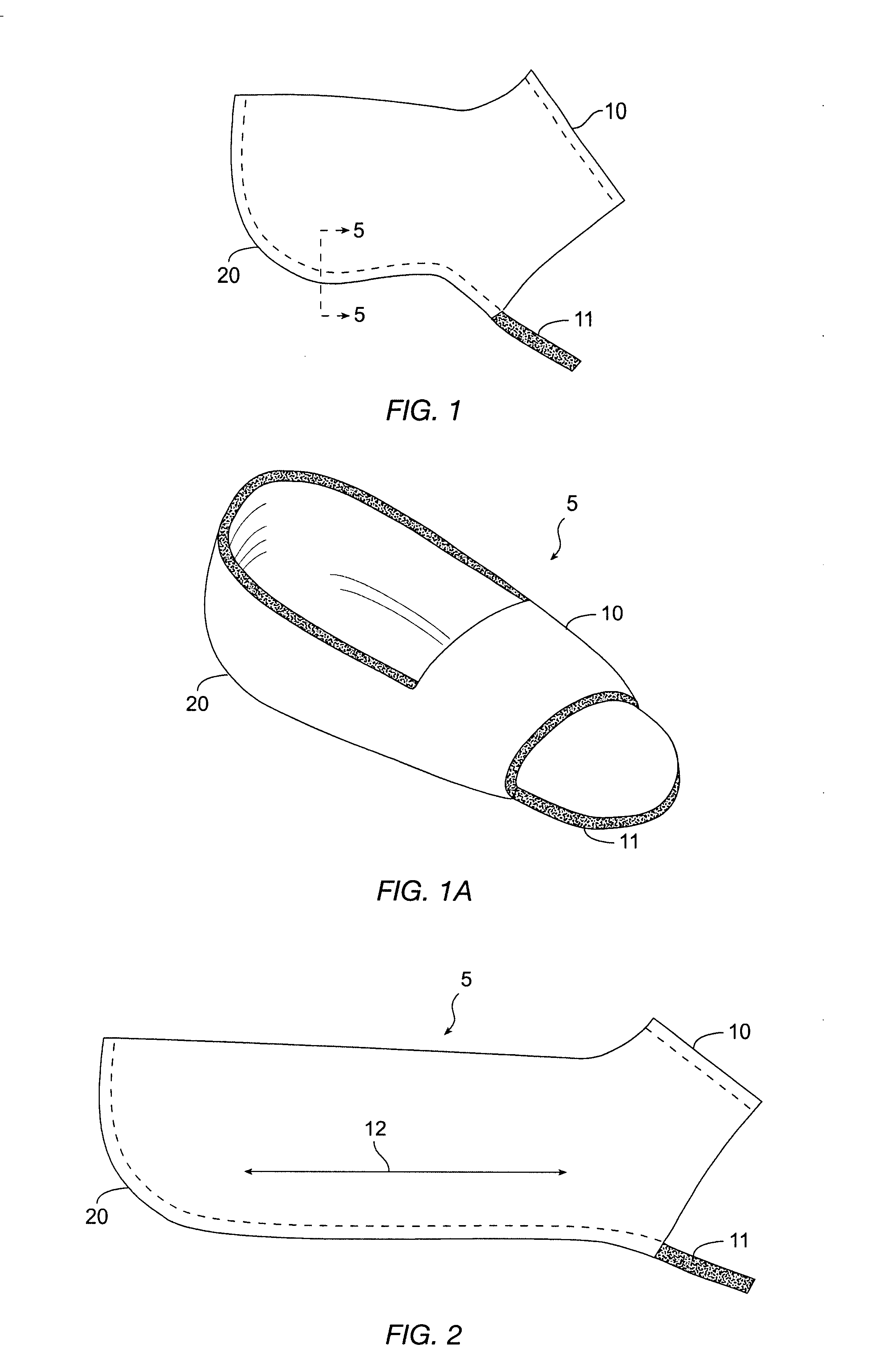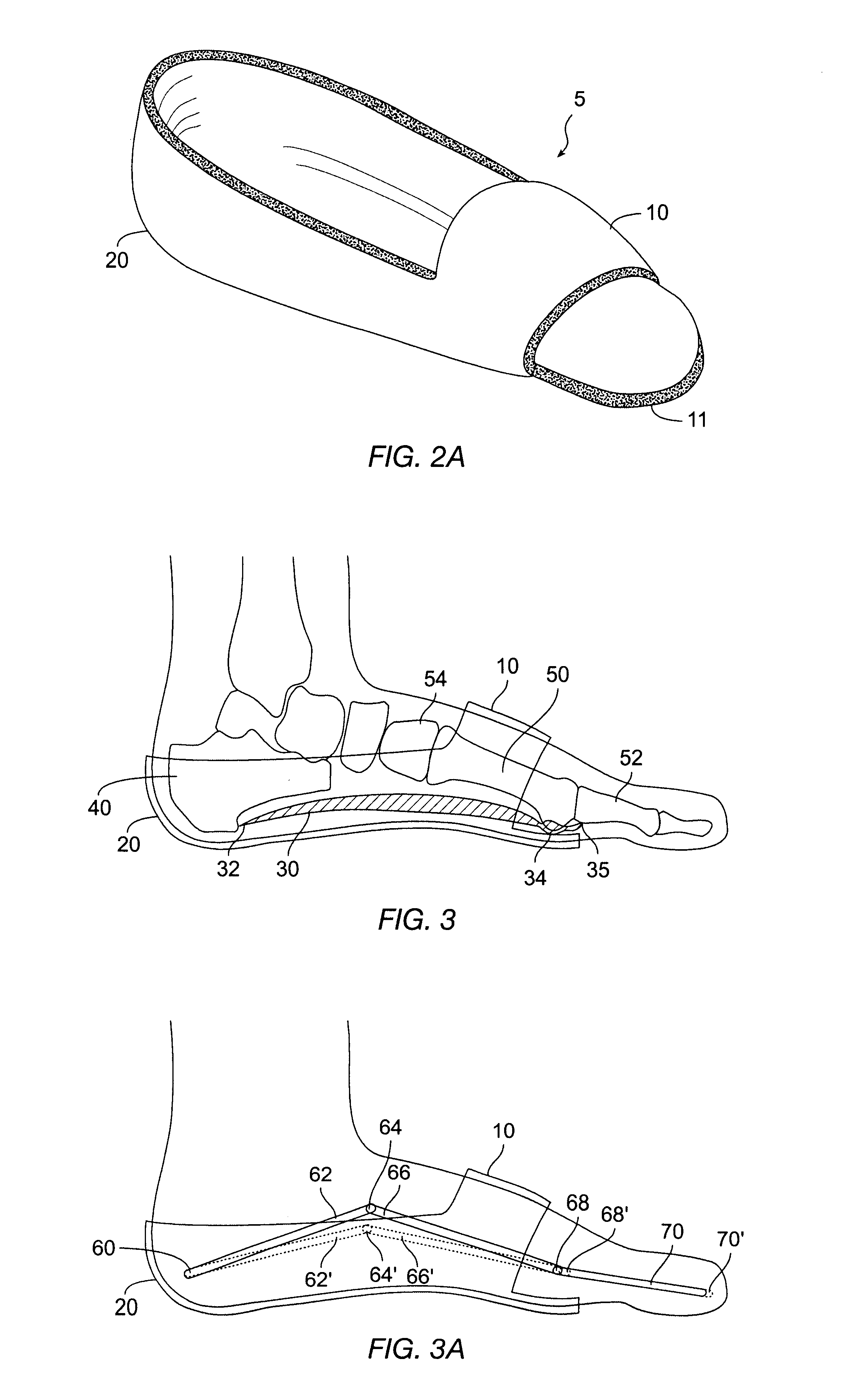Plantar fascia support apparatus
a support device and plantar fascia technology, applied in the field of support devices, can solve the problems of affecting the stability of the arch, so as to prevent the collapse of the arch, delay the expansion of the foot, and prevent the effect of the arch collaps
- Summary
- Abstract
- Description
- Claims
- Application Information
AI Technical Summary
Benefits of technology
Problems solved by technology
Method used
Image
Examples
Embodiment Construction
[0032]The preferred embodiment of the support apparatus of the present invention is illustrated by side view in FIG. 1 and in perspective view in FIG. 1A.
[0033]The support apparatus comprises two major portions. The first portion 10 is essentially tubular in shape. The second portion 20 is shaped like the heel of the foot, and may be attached to first portion 10 to form a unitary piece. Support apparatus 5 may be constructed (molded) as a single sheet or sewn to form the unitary piece as shown. Alternatively, a heat seal tape of the same or similar material may be utilized. Also, support apparatus 5 may be constructed in multiple pieces. As a preferred embodiment, bottom front portion 11 of apparatus 5 may extend under the weightbearing area of the foot or attach to the top portion of the shoe sole. The plantar fascia support apparatus may be integrated and bonded with the design of the shoe sole to facilitate forward locomotion (FIG. 4).
[0034]The preferred embodiment of the present...
PUM
 Login to View More
Login to View More Abstract
Description
Claims
Application Information
 Login to View More
Login to View More - R&D
- Intellectual Property
- Life Sciences
- Materials
- Tech Scout
- Unparalleled Data Quality
- Higher Quality Content
- 60% Fewer Hallucinations
Browse by: Latest US Patents, China's latest patents, Technical Efficacy Thesaurus, Application Domain, Technology Topic, Popular Technical Reports.
© 2025 PatSnap. All rights reserved.Legal|Privacy policy|Modern Slavery Act Transparency Statement|Sitemap|About US| Contact US: help@patsnap.com



